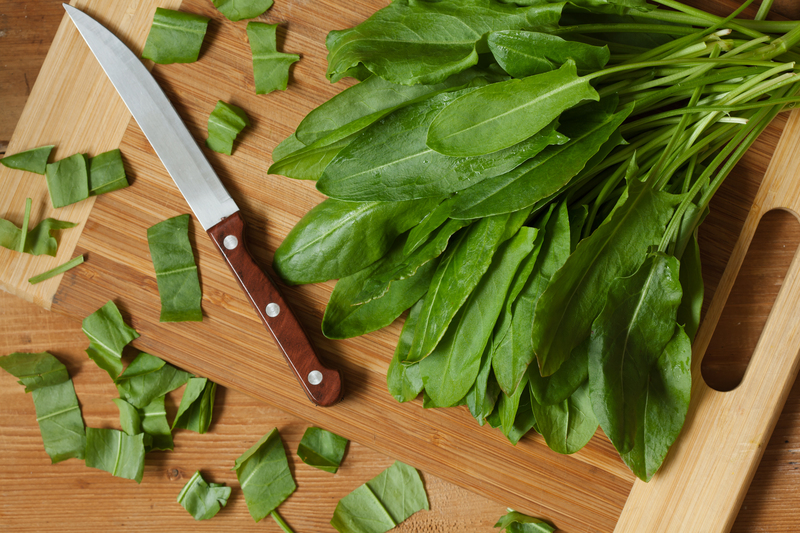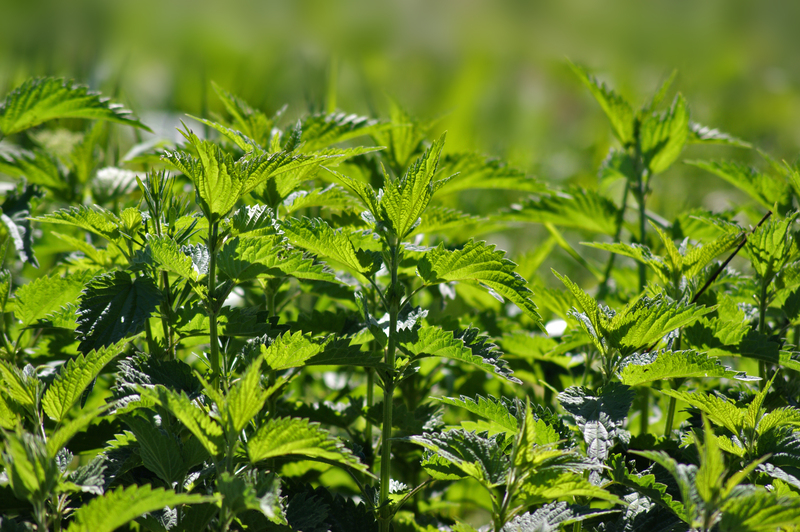Nurturing Young Minds with a Child-Friendly Garden
Posted on 17/06/2025
Nurturing Young Minds with a Child-Friendly Garden
Creating a child-friendly garden is one of the most rewarding projects for any parent, teacher, or community member. A garden designed with children in mind fosters curiosity, enhances learning, and cultivates a lifelong appreciation for nature. In today's fast-paced and technology-driven world, nurturing young minds with a dedicated garden space can be both fun and hugely beneficial.
Why Choose a Child-Centric Gardening Approach?
Child-friendly gardens aren't just about pretty flowers or easy-maintenance plants; they're about engagement, exploration, and education. These green spaces provide children opportunities to:
- Explore nature hands-on--discovering bugs, soil, and plant life intimately.
- Develop responsibility--through watering, weeding, and other garden care routines.
- Boost creativity--via choosing plants, designing layouts, and making garden art.
- Enhance sensory skills--with the variety of colors, textures, smells, and sounds.
- Foster healthy lifestyles--by growing and eating their own vegetables and fruits.
- Encourage teamwork and social skills if gardening with peers.
The Educational Power of a Kids' Garden
The best gardens for children transform basic soil patches into living classrooms. Nurturing young minds with a kid-friendly garden supports learning in science, math, language, and art. Children observe natural cycles, witness plant growth, and learn vital environmental lessons. As they plant seeds, measure garden beds, and track changes, gardening builds practical skills with real-world applications.

Designing the Perfect Child-Friendly Garden
1. Safety Comes First
When creating a nurturing children's garden, safety is paramount. Consider these essential steps:
- Choose non-toxic plants: Avoid plants that are poisonous or have sharp thorns.
- Use organic-approved products--keep pesticides, herbicides, and fertilizers kid-safe.
- Check for trip hazards like loose stones or garden tools left lying around.
- Fence off ponds or deep water features to prevent accidents.
- Provide shaded areas to protect little ones from the sun.
2. Welcoming Layouts for Little Explorers
Children's gardens should be accessible and inviting. Here's how you can create spaces that are fun and functional:
- Create easy-to-navigate paths wide enough for small feet.
- Use distinct garden zones--vegetable beds, flower patches, sensory corners, and play areas.
- Include seating for story-time or quiet observation.
- Add bright colors and playful signage to guide and excite children.
3. Flexible, Interactive Features
A successful garden for kids is interactive and ever-changing. Consider the following:
- Raised beds and container gardening for easy access and soil management.
- Vertical gardens, trellises, and teepees for climbing plants and imaginative play.
- Small digging patches or mud kitchens to let kids enjoy tactile play.
- Weatherproof chalkboards or log "stepping stones" for creative expression and movement.
Choosing the Best Plants for a Children's Garden
1. Edible Delights
Planting fruits and vegetables in a child-focused garden gives kids direct exposure to where food comes from--and encourages healthy eating! A few favorites include:
- Cherry tomatoes--easy to grow and perfect for snacking off the vine.
- Strawberries--sweet, red, and irresistible.
- Peas and snap beans--fun to pick and munch raw.
- Carrots and radishes--fast-growing "hidden" treasures for digging up.
- Pumpkins and zucchinis--watch them grow bigger every week!
2. Sensory-Rich Plants
Add plants that stimulate sight, touch, sound, taste, and smell, encouraging curiosity and engagement at every step.
- Lamb's ear--soft, fuzzy leaves little fingers love.
- Lavender and mint--delicious scents rub off on hands.
- Sunflowers--towering delights for eyes and birds alike.
- Grasses and bamboo--rustle and sway with the wind.
- Nasturtiums--pretty edible flowers in bright colors.
3. Pollinator-Friendly Choices
Teach children the importance of garden pollinators by including:
- Marigolds--attract bees and deter some pests.
- Borage, coneflower, and cosmos--favorites of butterflies and hummingbirds.
- Milkweed--essential for monarch butterflies.
Fun Activities to Nurture Young Gardeners
Planting Seeds of Learning
Transform planting into a magical experience! Let every child choose their own seeds, make plant markers, and create a "growth diary".
- Seed starting indoors during winter months extends gardening year-round.
- Sprout windowsills with quick-harvest options like cress, beans, or microgreens.
- Watch roots and shoots emerge from clear cups or reused jars.
Garden Art & Creativity
Unleash creativity in the garden:
- Decorate flowerpots with paints or mosaics.
- Craft wind chimes from natural or recycled materials.
- Create stepping stone mosaics or garden sculptures.
- Make bug hotels and fairy houses using twigs and leaves.
Learning Through Outdoor Play
- Start a scavenger hunt for leaves, seeds, bugs, or colors.
- Play garden games: hopscotch, balance beams, and hiding spots between the plants.
- Share garden stories--read books or make up tales about imaginary garden friends.
Seasonal Projects to Maintain Interest
- Spring: Sow seeds, watch pollinators, and set up rain gauges.
- Summer: Harvest, water play, and flower pressing.
- Autumn: Leaf pile fun, collecting seeds and bulbs for the next year.
- Winter: Make bird feeders, plan the next season, and observe frosty patterns.
Benefits of a Child-Centered Garden
There are profound advantages to nurturing young minds with a child-friendly garden:
- Encouraged mindfulness--children learn patience as they wait for plants to grow.
- Enhanced concentration and critical thinking through observation and questions.
- Better physical health from digging, planting, and harvesting.
- Improved self-esteem--children take pride in their achievements.
- Deeper connections to nature and the food they eat.
Tips for Parents and Educators
Encourage Independence with Guidance
- Let children make decisions about what to grow and where.
- Teach basic gardening skills at their pace--watering, planting, weeding, and composting.
- Offer help with new or challenging tasks, but step back as confidence grows.
Be Patient and Celebrate Every Success
- Celebrate every sprout, bloom, and harvest, no matter how small.
- Take photos or keep a garden journal to remember each milestone.
- Expect setbacks--sometimes seeds fail or plants get eaten. These are valuable lessons, too!
Including the Whole Community
A child-oriented garden is even more impactful when the wider community is involved:
- Invite grandparents, neighbors, or older students to share tips and stories.
- Host a garden open day or harvest festival to showcase achievements.
- Create a school or neighborhood gardening club for shared learning and support.

Going Beyond the Backyard: School and Community Children's Gardens
Many schools and community centers benefit from educational children's gardens, which transform unused spaces into thriving learning environments. These gardens can be integrated into the curriculum, encouraging cross-subject projects and year-round engagement.
- Science classes measure, track, and record garden growth.
- Art projects use natural materials and changing landscapes for inspiration.
- Math lessons teach counting, measuring, and spatial planning.
- Nutrition sessions encourage healthy eating habits with homegrown produce.
Grants and Support
Many organizations provide guidance and funding to support child-centric gardens. Local councils, gardening societies, and environmental groups often sponsor seeds, tools, and learning materials.
Cultivating a Lifelong Passion for Gardening
The positive impact of a child-friendly garden lasts a lifetime. As children plant, water, and observe, they not only learn about nature and science, but also develop a sense of responsibility, patience, and wonder that will stay with them forever. Whether you're a parent, teacher, or community leader, setting up a nurturing, engaging garden space for children is one of the most transformative gifts you can give.
Ready to Nurture Young Minds with a Garden?
- Start small--an herb pot, a raised bed, or even a sunny windowsill is enough.
- Involve children in every step from planning to planting to harvesting.
- Keep it fun, flexible, and open to exploration.
A child-friendly garden is much more than a patch of dirt--it's a living, breathing universe for learning, laughter, creativity, and discovery. Nurture young minds, and watch both your garden and your children grow!

